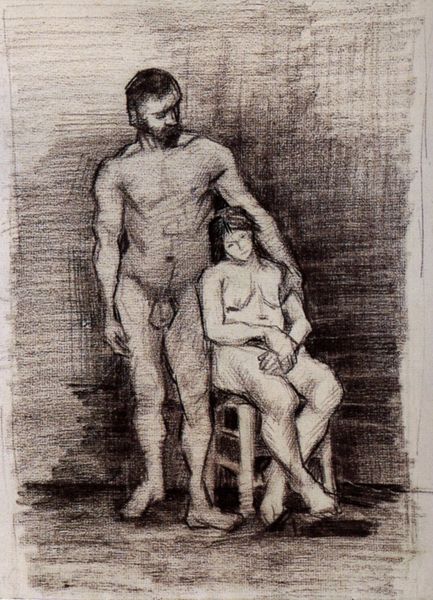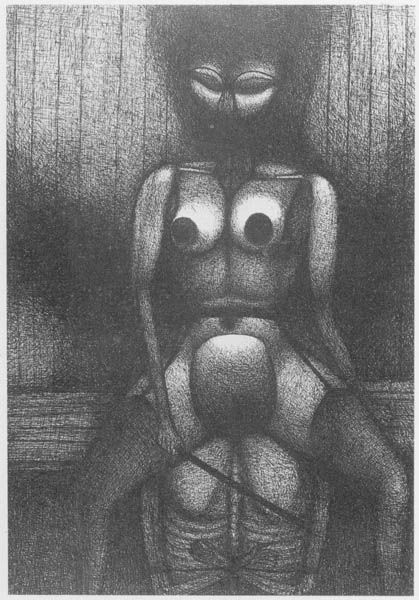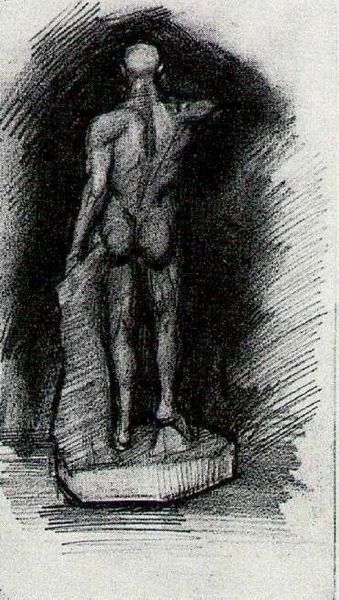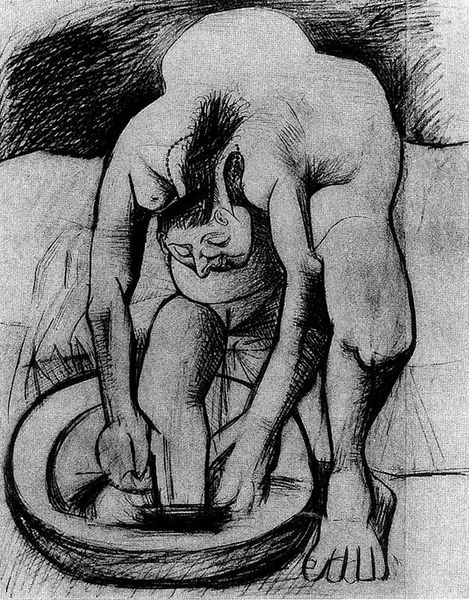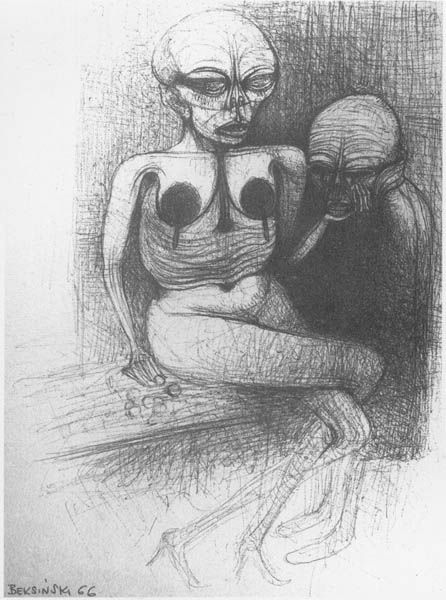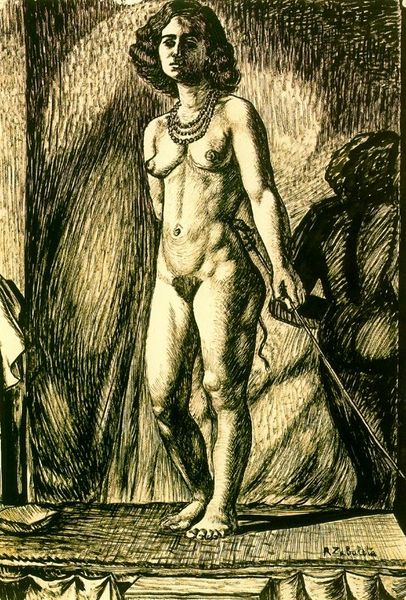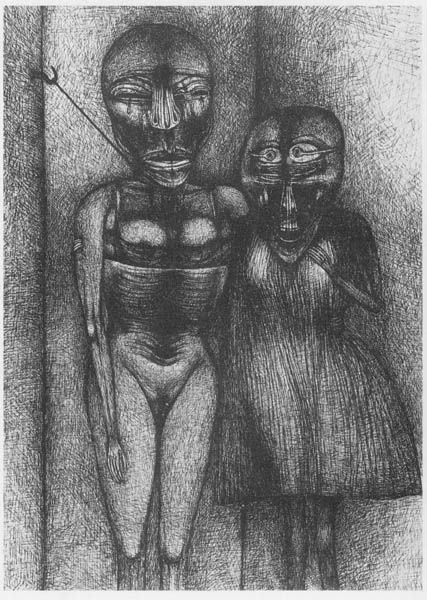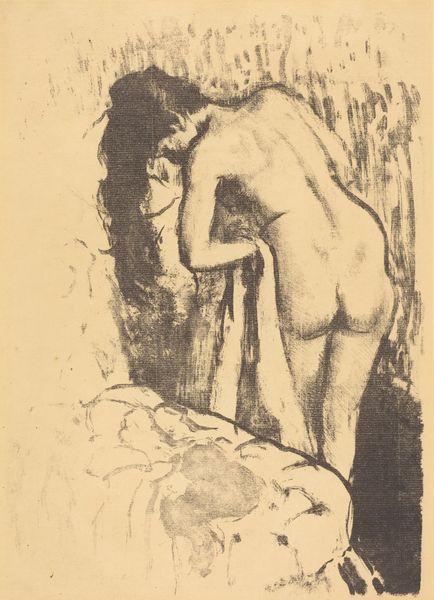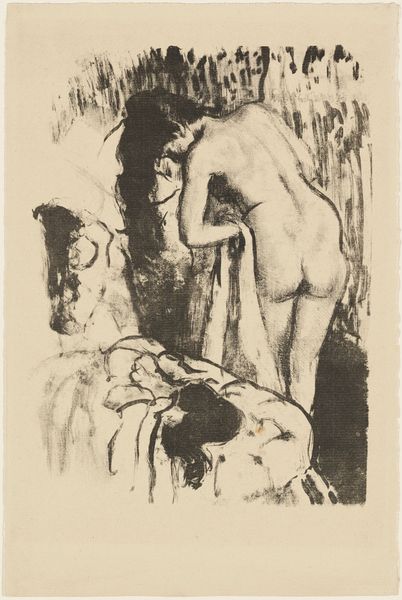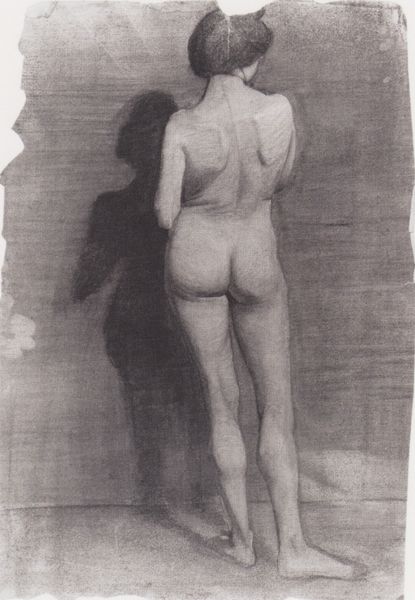
Seated nude and standing nude 1906
0:00
0:00
pablopicasso
Philadelphia Museum of Art, Philadelphia, PA, US
drawing, charcoal
#
drawing
#
cubism
#
portrait
#
charcoal drawing
#
figuration
#
form
#
female-nude
#
expressionism
#
abstraction
#
human
#
portrait drawing
#
charcoal
#
nude
#
early-renaissance
#
erotic-art
Dimensions: 63.6 x 47.6 cm
Copyright: Public domain US
Curator: Here we have Pablo Picasso’s 1906 charcoal drawing, "Seated nude and standing nude," currently residing here at the Philadelphia Museum of Art. Editor: My immediate impression is one of somber unease. The raw, almost primitive quality of the charcoal seems to amplify the figures’ stark vulnerability. Curator: Indeed. This work marks a crucial juncture in Picasso’s artistic evolution, a move away from the more sentimental tones of his Rose Period towards the angular, fragmented forms that would later define Cubism. Look at how the artist uses dense hatching to define the volumes and shadows. Editor: Yes, it's almost as though the bodies are being built up through a laborious process. The texture itself speaks of time and the sheer physical effort involved in producing the work. You can almost feel the artist wrestling with the material, the charcoal resisting the form he is trying to create. This challenges notions of effortless artistic genius, presenting a gritty, human reality instead. Curator: Absolutely. Notice the expressive distortion of the figures, especially the seated nude. Her gaze, those large eyes, evokes a sense of introspection. We see not idealized beauty, but a complex representation of the human form, infused with psychological depth. The contrast with the more erect posture of the other nude creates a compelling dialogue, doesn't it? Editor: It does. The almost oppressive application of charcoal lends to the figures a weight, a groundedness that challenges classical notions of the nude as simply an object of visual pleasure. The choice of this coarse medium underscores the corporeality, the physical existence, of these women in a powerful way. One wonders about their socio-economic positioning, perhaps workers? Curator: A possible reading, yes. It’s through this focus on form, and the challenging of traditional perspectives, that Picasso forges a new visual language. Editor: Ultimately, it’s about the transformation of simple materials through labour and imagination. It certainly invites us to question established conventions and reconsider our perspectives on beauty, labor, and the raw process of creation. Curator: Agreed, the beauty exists, in a non-conventional and complex way. A testament to the transformative power of line and form in evoking emotion.
Comments
No comments
Be the first to comment and join the conversation on the ultimate creative platform.
